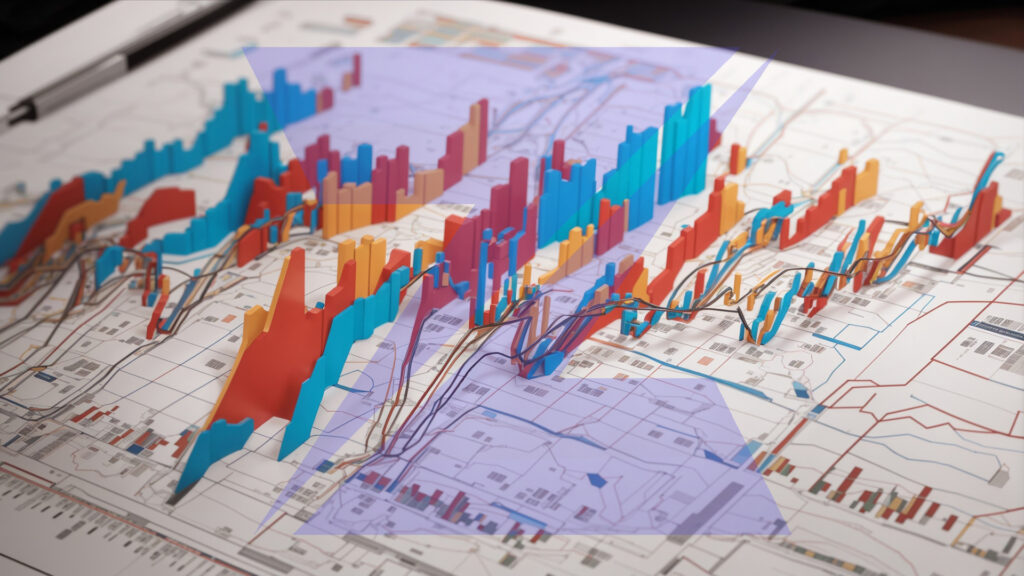Combining technical and fundamental analysis can provide traders and investors with a comprehensive approach to making informed decisions in the financial markets. Each approach has its strengths, and integrating them can offer a more holistic view of market conditions. Here’s how you can effectively combine technical and fundamental analysis:

Technical Analysis: Technical analysis involves studying historical price data and trading volumes to identify patterns and trends in the market. Traders use various tools and techniques, such as chart patterns, moving averages, and technical indicators, to predict future price movements.
Fundamental Analysis: Fundamental analysis, on the other hand, focuses on assessing the intrinsic value of a stock or asset by analyzing related economic, financial, and qualitative factors. This method involves studying a company’s financial statements, earnings reports, industry trends, and overall economic indicators to determine its potential for growth and profitability.
Benefits of Combining Both: When technical and fundamental analysis are combined, traders gain a more comprehensive understanding of the market. Technical analysis helps pinpoint entry and exit points based on price trends, while fundamental analysis provides insight into the underlying factors that might be driving these trends. By considering both aspects, traders can make more informed decisions, reducing risks and maximizing potential profits.
Understand Combining Technical and Fundamental Analysis
1. Understanding Technical Analysis:
- Technical Indicators: Learn how to use technical indicators, such as moving averages, Relative Strength Index (RSI), and MACD, to identify trends, momentum, and potential entry/exit points.
- Chart Patterns: Understand chart patterns like head and shoulders, double tops/bottoms, and flags, which can provide insights into market sentiment and potential reversals or continuations.
- Support and Resistance: Recognize key support and resistance levels on charts, as they indicate potential price reversal or breakout points.
2. Understanding Fundamental Analysis:
- Economic Indicators: Understand important economic indicators like GDP growth, employment data, and inflation rates. These indicators can impact the overall market sentiment.
- Company Fundamentals: For stock trading, analyze company fundamentals such as revenue, earnings, debt levels, and growth prospects. Look for companies with strong financials and a competitive advantage in their industry.
- Market News and Events: Stay updated with market news, geopolitical events, and corporate announcements that can influence asset prices.
3. Integrating Technical and Fundamental Analysis:
- Confirming Signals: Use technical analysis to identify potential trade setups and then use fundamental analysis to confirm the validity of the trade. For example, if technical analysis indicates a bullish trend, check if the company’s fundamentals support the upward movement.
- Avoiding Conflicting Signals: If technical analysis suggests a bullish trend, but fundamental analysis reveals negative news or weak financials, it might be wise to reconsider the trade. Avoid trades where technical and fundamental signals conflict.
- Long-Term vs. Short-Term: Use fundamental analysis for long-term investment decisions, focusing on the underlying value of an asset. Use technical analysis for short to medium-term trades, focusing on price patterns and momentum.
4. Risk Management:
- Stop-Loss and Take-Profit: Implement stop-loss and take-profit levels based on technical analysis, and consider adjusting them if significant fundamental news or events occur.
- Risk vs. Reward: Evaluate potential trades based on both technical setups and fundamental factors. Assess the risk-to-reward ratio to ensure it aligns with your risk tolerance and profit goals.
5. Continuous Learning:
- Stay Updated: Both technical and fundamental analysis methods evolve. Stay updated with the latest tools, techniques, and market trends in both areas to enhance your analytical skills.
6. Use of Multiple Timeframes:
- Long-Term and Short-Term Views: Combine fundamental analysis for a long-term view with technical analysis on shorter timeframes for precise entry and exit points.
Key Points:
- Confirmation and Validation: Use one analysis method to confirm signals generated by the other, providing additional validation for trades.
- Adaptability: Be adaptable; market conditions can change quickly. Stay flexible and adjust your approach based on the latest technical and fundamental data.
Learn more about combining technical and fundamental analysis here
By combining technical and fundamental analysis, traders and investors can make more informed decisions, reduce risks, and improve the overall probability of successful trades. However, it’s important to understand that no approach guarantees profits. Both technical and fundamental analysis are tools to assist in decision-making, and careful consideration, continuous learning, and prudent risk management are essential regardless of the analysis methods used.
Learn about psychology of trading for traders here